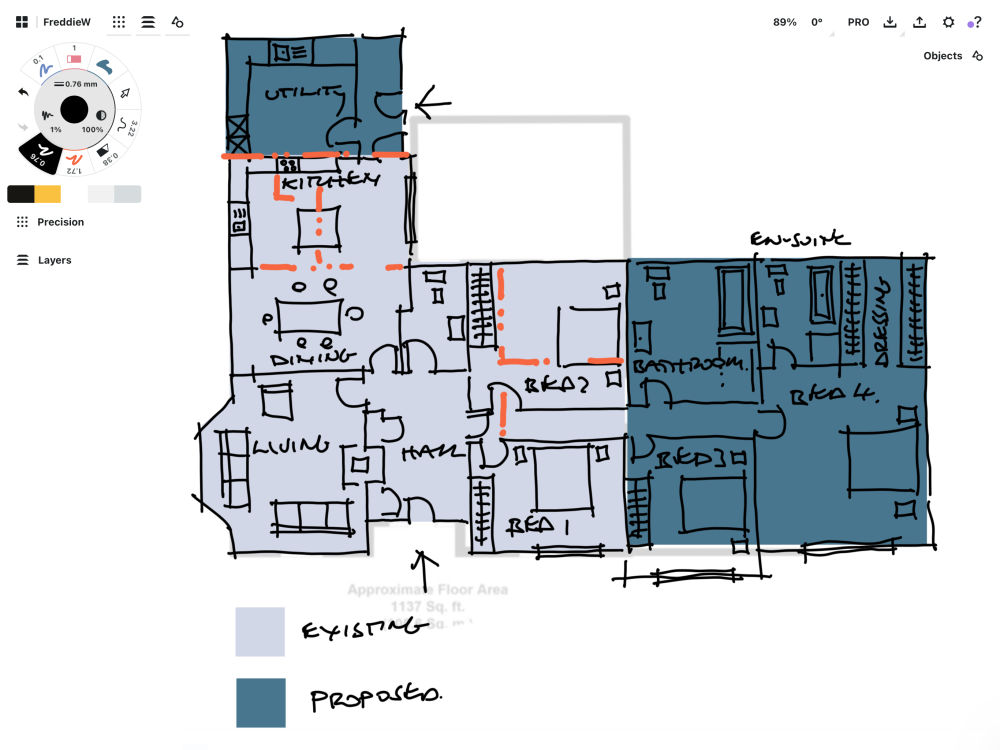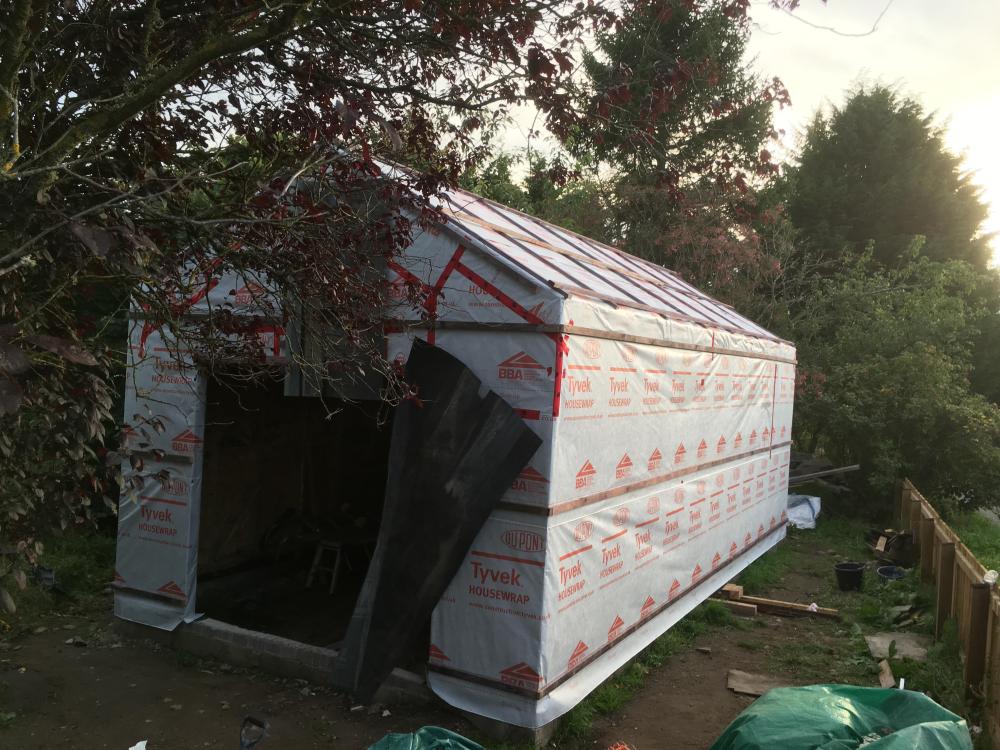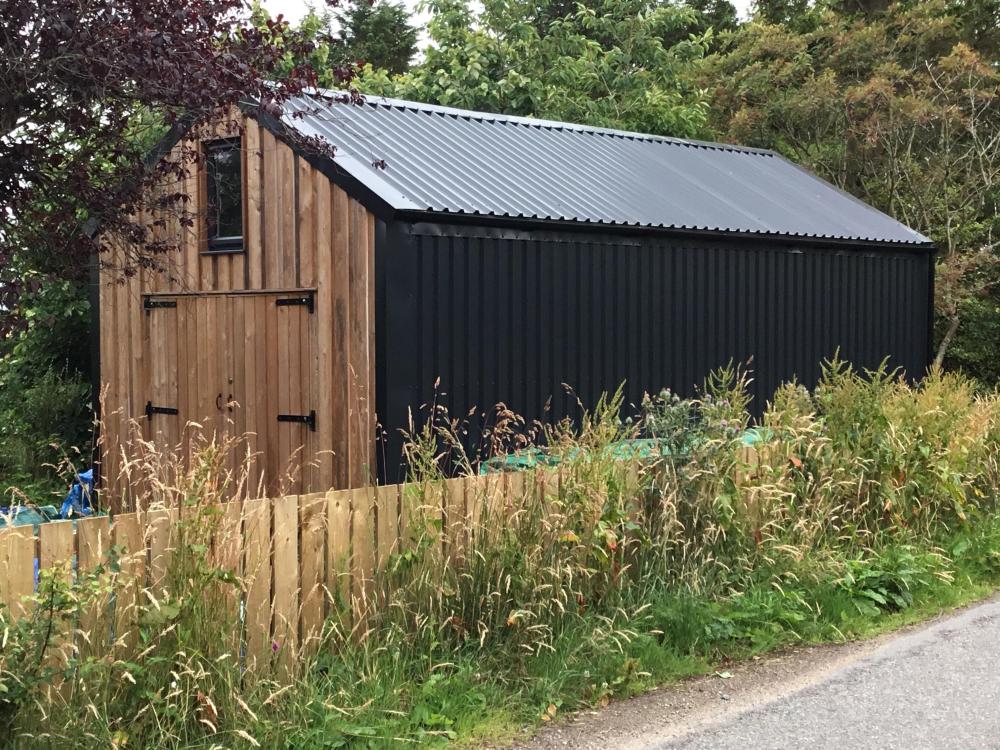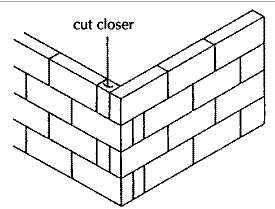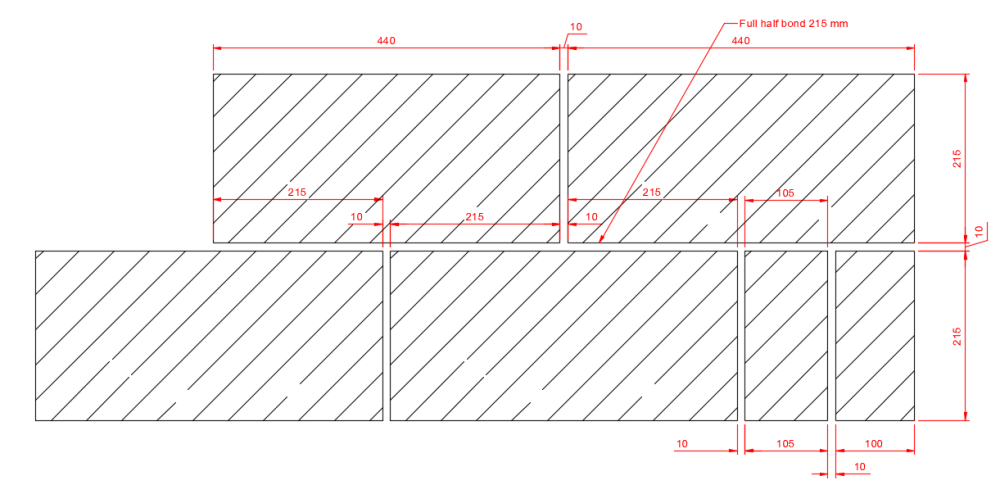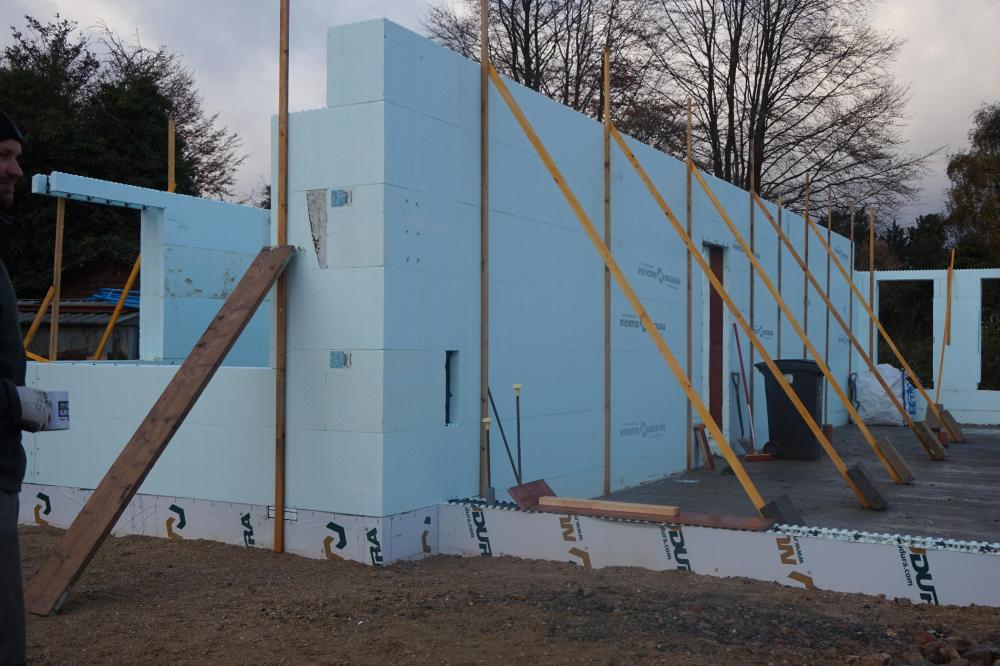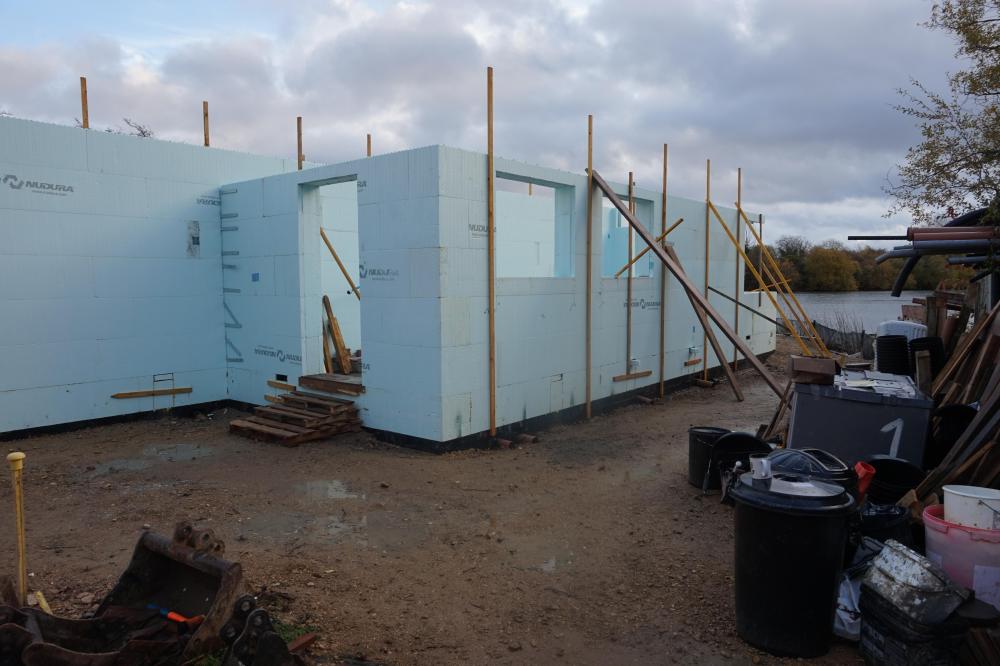Leaderboard
Popular Content
Showing content with the highest reputation on 12/24/23 in all areas
-
4 points
-
There are so many options for something like this. There’s that garden rooms bloke on YouTube that advocates cementing threaded rods into the ground and building off that. Also your skill level - what you can do yourself - costs of materials etc etc. I’d never built anything before so my small barn was DIY constructed as follows ( apologies if using wrong terminology). for founds I did a strip foundation with deeper dig at 6 points - four corners plus mid way (8x4 building). Couple of courses of brickwork around. Foundations. In filled with hardcore, sand, dpc, solid insulation then did a concrete hand pour over top to create concrete floor. Treated timber bottom plate 4x2 fixed to perimeter brickwork. I built a series of modular 2.4 x 1.2 wall panels out of 4x2 with 9mm osb on face. These were bolted to the bottom plate. Built the gables same way, then the roof timber, beams etc for a 45 deg roof. Clad structure in breathable membrane. Insulated the framework and put airtight polythene stapled inside. Whole thing clad in combo of steel sheeting and leftover Siberian larch from house. Interior not yet finished but thing has not moved even in storms. Inside it’s not cold in winter and not hot in summer. saved a fortune building it myself and really enjoyed doing it learning many skills I hadn’t done before other than usual diy around home.2 points
-
Hi All, No it's not sprout related... We have been progressing well with the Nudura but this wind is causing havoc. We haven't got scaffold or alignment system yet as we weren't that high but getting blocks up to the near joist level and the wind is just blowing it over or off the DPC block. Would the scaffold/alignment really combat the wind? Any tips? I thought about bracing it vertically to the concrete filled DPC level to strengthen it Cheers1 point
-
@Clark Kent are you fitting MVHR and making the house fully airtight? If so, this may help keep your bills down. We extended and renovated a 1930s semi, and although we did add EWI to the walls and 100mm of PIr under the floors , it is not anywhere near passiv standard, yet I’m convinced the MVHR saves us quite a bit of money, because we don’t need to run our UFH very long to warm up the house. Even in the depths of winter it’s only on 4-5h a day on ground floor and 2.5hr a day in kids bedroom. When I’m working for the day in my study I maybe switch it on in that room for half the day. Occasionally switch it on in the bathrooms, but they are all on the upper floors of the house so get indirect heat anyway from downstairs.1 point
-
Sound like there is a gap in the market for competitive products who can better the price point. Its only electronics after all but perhaps they need to avoid the complications of the Home Assistants - I wanted to integrate them into my home brew system but decided that the 988 page standards doc was better left alone and to stick with If This Then That only would be simpler.1 point
-
Lots of info here. https://www.stovesonline.co.uk/stove_building_regulations.html1 point
-
I wouldn't bother doing an insulated slab for a garden building or even doing brick courses. For mine I just did 100mm MOT, dpm, 100mm reinforced slab. Then bolted sole plates down with oversized dpc underneath, which I later lapped up underneath the breather membrane of the walls. For the floor buildup, I put more dpm down over the concrete, taped to the inside of the dpc. Then put 100mm PIR on top, taped with foil tape. Then floating 18mm t&g osb subfloor on top of that (glued). Really simple to DIY, really effective.1 point
-
Pump runs 24/7 at 30 degree flow in my place, I’ve just wired it to a switched-fused spur…. Heat pump runs 24/7 on weather comp too… not a single wall thermostat in the whole place. trvs in the bedrooms, that’s it.1 point
-
What do you mean, temporarily or for pouring. If temporarily then do whatever you feel needs doing. Same for the pour really, I over braced everything, but didn’t have a single issue apart from one reveal that I had actually forgotten to put screws in some timber. Half a dozen screws later it was all fixed. too much bracing??? probably. Did I have any problems?? no.1 point
-
1 point
-
Nearly.. but someone has not planned it out right. My gut feeling is either the Architect or SE has not thought it through, or you have a brickie that it going to swing the lead and be even more lazy later on. Probably all are at fault by not talking to each other. Maybe the Architect, probably the SE by not positioning the movement joints in the right place and then not properly not specifying the bond required, mind you this is covered in parts of the BS 5628 codes, BS 8000 series for good workmanship etc. Blocks behave differently from bricks, bricks are shorter so the bond length is less but you have three brick courses for every on standard block laid on edge thus the bonding effect is enhanced with bricks cf blocks. Lucky you have the benefit of her intuition, I suspect there may be more to this and she has smelt "manure"? The below is the right way of doing it. Corners are essential as they can resist the bending forces in the wall which your SE may have designed for, a well constructed corner saves the day many a time.. but they must be constructed properly. For 100mm block the cut closer will be as below. For 140mm block the cut is a little shorter. The main thing is that you work out from the corners... the strong points of the wall and position any movement joints, debonding ties accordingly. You don't do a rubbish corner and hope the rest hangs in there.1 point
-
I didn’t get the braces on site until I had the whole structure up to 2.7m we had some bad wind and only lost a block or two. Start at the corners and leave some gaps out in the middle to let the wind through. You will need loads of scaffolding boards for when the braces come, I don’t think many bracing systems hire out with boards, so you might as well get 20 boards now and a bundle of batten and get it propped, ready for the bracing system.1 point
-
I would contact highways and ask them to confirm in writing that the highway extends across the green land as mentioned in the attached deeds. Then write to the planners stating that you do not need planning permission to form an access onto an unclassified highway which the highways department have confirmed includes the green land. If worried about future come back apply for a Certificate of Lawfulness. On the grounds that that highway extends to your property boundary.1 point
-
So definitely not twist the wires together and wrap with electrical tape?1 point
-
Having fitted a gshp partly because I previously thought it a good idea and partly because I wanted to...I would agree. Quality air to water setups are achieving COP 4.5+ in a UK Climate. It's a no brainer. Cheap option: take the heat pump gubbins out of your all-in-one then recycle the brine loop pipe entry to the property to connect to an air to water monobloc (6kW - assume you can't go to big on hot water production unless you KNOW that the chilli in the cylinder is good) Plenty of space inside the all in one to house the three port diverter and the air to water controls. Better option: swap all in one for a plain cylinder of respectable coil size and volume; fit air to water unit. It wants to go by the back door. Learn to love it.1 point
-
It's Ireland - we have 360 degree weather and views!1 point
-
A month in, and an update on the smiths ecovector fan coils. they’re not bad, pretty simple things with zero electronics inside. The metalwork isn’t bad quality and the screws go back in when you take the covers off. Having the thermal switch means I can leave them switched ‘on’ and they’ll fire up when the time clock raises the flow temperature to ‘day’ mode. The fan isn’t as quiet as a good quality air-air unit from daikin, but I haven’t had any complaints about the noise. The 12v one in the bathroom does a good job of keeping that space warm and dry. Were they cheap, no….. do they do the job, yes. Would I prefer the reverso units, yes…. Did the reverso units fit the wall space, no…. 🤣 I’ve got one in the hall/stairwell area, one in the kitchen/lounge and one in the bathroom.1 point
-
For long term maintenance there's a lot of benefit in having many of the same part. If you're already waist deep in Loxone relays I'd just keep with them, the simplicity will payback in the long run My suggestion was more if you hadn't bought anything yet (in 13 pages I'd lost track entirely where you're at 😂, thought still in design).0 points
-
0 points
-
Yale do a door slightly open lock you can add. No door will really stand up to a crow bar. If it's a glazed door an automatic centre punch the glass and just walk in.0 points

